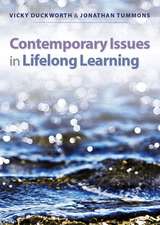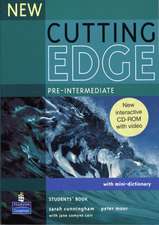Cuprins
(Note: The preliminary chapters (Paso A-C) and Capítulo 1 of this Table of Contents provide a comprehensive listing of contents for those chapters, as representative of the other chapters. Capítulo 2-15 provides only the vocabulary topics and grammatical structures.)
The following lists the Enlace readings found in each chapter:
Capítulo 1 Enlace a la música • Cuba
Capítulo 2 Enlace a la música • La música andina
Capítulo 3 Enlace al cine • México y España
Capítulo 4 Enlace a la literatura • “Versos sencillos” José Martí
Capítulo 5 Enlace a la música • El rock en español
Capítulo 6 Enlace a la literatura • “Cuadrados y ángulos” Alfonsina Storni
Capítulo 7 Enlace a la literatura • “Cuando salimos de El Salvador” Jorge Argueta
Capítulo 8 Enlace a la literatura • “Jitomates risueños” Francisco X. Alarcón
Capítulo 9 Enlace a la música • La música infantil
Capítulo 10 Enlace a la literatura • “Dos cuerpos” Octavio Paz
Capítulo 11 Enlace a la música • La danza negra en Perú
Capítulo 12 Enlace al cine • Argentina y Chile
Capítulo 13 Enlace a la literatura • “Nada más” María Elena Walsh
Capítulo 14 Enlace a la literatura • “Kinsey Report No.6” Rosario Castellanos
Capítulo 15 Enlace a la literatura • “La noche buena” Tomás Rivera
Paso A La clase y los estudiantes
Actividades de comunicación
Los nombres de los compañeros de clase
¿Quién es?
Los colores y la ropa
Los números (0–39)
Los saludos
Gramática
A.1 Naming and Describing: The Verbs llamar and llevar
A.2 Spelling: The Spanish Alphabet
A.3 Identifying People and Things: Subject Pronouns and the Verb ser
A.4 Identifying People and Things: Gender
A.5 Responding to Instructions:Commands
Paso B Las descripciones
Actividades de comunicación
Hablando con otros
Las cosas en el salón de clase
Los números (40–69)
El cuerpo humano
La descripción de las personas
Gramática
B.1 Addressing Others: Informal and Polite you (tú/usted)
B.2 Expressing Existence: hay
B.3 Describing People and Things:Negation
B.4 Describing People and Things: Plural Forms
B.5 Describing People and Things: Adjective-Noun Agreementand Placement
Paso C Mi familia y mis amigos
Actividades de comunicación
La familia
¿Qué tenemos?
Los números (10–100) y la edad
Los idiomas y las nacionalidades
Gramática
C.1 Expressing Possession: The Verbs tener and ser de (l)
C.2 Expressing Possession: Possessive Adjectives
C.3 Expressing Age: The Verb tener
C.4 Describing People: Adjectives of Nationality
C.5 Talking about Habitual Actions: Present Tense of Regular –ar Verbs
Capítulo 1 Los datos personales y las actividades
Actividades de comunicación y lecturas
Las fechas y los cumpleaños
Datos personales: El teléfono y la dirección
Ventanas culturales • Nuestra comunidad: Rigoberta Menchú
Enlace a la música • Cuba
La hora
Las actividades favoritas y los deportes
Ventanas al pasado • Diego Rivera y Frida Kahlo
En resumen
Lectura: La pasión por los deportes
Gramática
1.1 Counting: Numbers 100–1000 and Dates
1.2 Talking about Habitual Actions: Present Tense of –er and –ir Verbs
1.3 Asking Questions: Question Formation
1.4 Telling Time: Hours and Minutes
1.5 Expressing Likes and Dislikes: gustar + Infinitive
Capítulo 2 Mis planes y preferencias
Actividades de comunicación
Los planes
Las clases
Las preferencias y los deseos
El tiempo
Gramática
2.1 Expressing Future Plans: ir + a + Infinitive
2.2 Sequencing: Ordinal Adjectives
2.3 Stating Preferences and Desires: preferir and querer + Infinitive
2.4 Describing the Weather: Common Expressions
2.5 Pointing Out People and Objects: Demonstrative Adjectives
Capítulo 3 Los lugares y las actividades
Actividades de comunicación
Las actividades diarias
Las tres comidas
Los lugares
¿De dónde es usted?
Gramática
3.1 Talking about Habitual Actions: Present Tense of Regular Verbs
3.2 Using Irregular Verbs: haver, salir, jugar
3.3 Referring to Objects Already Mentioned: Direct Object Pronouns lo, la, los, and las
3.4 Asking and Answering Questions
3.5 Talking About Location and Origin: estar + en, ir + al / a la and ser de
Capítulo 4 La vida diaria y los días feriados
Actividades de comunicación
Los dias feriados y las celebraciones
La rutina diaria
Los estados físicos y anímicos
Gramática
4.1 Discussing Habitual Actions: Verbs with Stem-Vowel Changes (ie, ue) in the Present Tense
4.2 Discussing Habitual Actions: Irregular Verbs
4.3 Describing Daily Routine: Reflexives
4.4 Ordering Events: Infinitives after Prepositions
4.5 Describing States: estar + Adjective and tener + Noun
Capítulo 5 Las clases y el trabajo
Actividades de comunicación
Las actividades de la clase de español
Las habilidades
Las carreras y las actividades del trabajo
Las actividades futuras
Gramática
5.1 Indicating to Whom Something is Said: Indirect Object Pronouns with Verbs of Informing
5.2 Expressing Abilities: saber and poder + Infinitive
5.3 Referring to Actions in Progress: Present Progressive
5.4 Expressing Obligation and Duty: tener que, deber, necesitar, hay que, es necesario
5.5 Expressing Plans and Desires: pensar, quisiera, me gustaría, tener ganas de
Capítulo 6 La residencia
Actividades de comunicación
El vecindario y la casa
Las actividades en casa
Las actividades con los amigos
Las presentaciones
Gramática
6.1 Making Comparisons of Inequality: más/menos
6.2 Making Comparisons of Equality: tan/tanto
6.3 Talking about Past Actions: Preterite Tense of Regular Verbs (Part 1)
6.4 Knowing People, Places, and Facts: conocer and saber
6.5 Referring to People Already Mentioned: Personal Direct Object Pronouns
Capítulo 7 Hablando del pasado
Actividades de comunicación
Mis experiencias
Las experiencias con los demás
Hablando del pasado
Gramática
7.1 Talking About Past Actions:Preterite Tense of RegularVerbs (Part 2)
7.2 Relating Past Events (Part 1): Verbs with Irregular Preterite Forms
7.3 More About Relating Past Events (Part 2): Stem-Changing Verbs in the Preterite
7.4 Reporting the Past: Indirect Object Pronouns with decir
7.5 Expressing ago: hacer + Time
Capítulo 8 La comida
Actividades de comunicación
Las comidas, las bebidas y la nutrición
La compra y la preparaciónde la comida
Los restaurantes
Gramática
8.1 Referring to Objects Already Mentioned: Impersonal Direct Object Pronouns lo, la, los, and las
8.2 More about Expressing Likes: The Verbs gustar and encantar
8.3 Making Negative Statements and Questions: No, never
8.4 Expressing one or you: The Impersonal se
8.5 Using Stem-Changing Verbs like pedir and servir: Present Tense and Preterite Forms
Capítulo 9 La niñez y la juventud
Actividades de comunicación
La familia y los parientes
La niñez
La juventud
Gramática
9.1 Describing Family Relationships: The Reciprocal Reflexive Verbs parecerse and llevarse bien
9.2 Expressing for, from, to whom: Prepositions + Pronouns
9.3 Saying What You Used to Do: The Imperfect Tense
9.4 Describing the Past: The Imperfect and Preterite of “State” Verbs
9.5 Saying What You Were Going to Do: The Imperfect Tense of ir + a + Infinitive
Capítulo 10 Nuestro planeta
Actividades de comunicación
La geografía y el clima
Los medios de transporte
La ecología y el medio ambiente
Gramática
10.1 Saying What You Have Done: The Present Perfect
10.2 Exclamations with ¡Qué… !, ¡Cuánto/a/os/as… !
10.3 Expressing by, through, Destination and Time (Part 1): por and para
10.4 Describing Actions: Adverbs
10.5 Expressing Reactions: More Verbs like gustar
Capítulo 11 De viaje
Actividades de comunicación
Los viajes en automóvil
En busca de sitios
Los planes de viaje
Los sitios turísticos
Gramática
11.1 Giving Instructions: Polite Commands
11.2 Softening Commands (Part 1): The Present Subjunctive following querer
11.3 Expressing Indefinite Future and Present Subjunctive of Irregular Verbs
11.4 Talking About Past Actions in Progress: Imperfect Progressive
11.5 Saying What Was Happening: The Imperfect in Contrast to the Preterite
Capítulo 12 La salud y las emergencias
Actividades de comunicación
El cuerpo humano y la salud
Las enfermedades y su tratamiento
Las visitas al médico, a la farmacia y al hospital
Los accidentes y las emergencias
Gramática
12.1 Expressing Existence: haber
12.2 Expressing Changes in States: Become, get
12.3 Making Requests: Indirect Object Pronouns with Commands and the Present Subjunctive
12.4 Adverbs Relating Unplanned Occurrences: se
12.5 Narrating Past Experiences: Present Perfect, Imperfect, and Preterite
Capítulo 13 De compras
Actividades de comunicación
Los productos y los materiales
Los precios
Comprando ropa
Las compras y el regateo
Gramática
13.1 Describing People and Things: Adjectives Used as Nouns
13.2 Indicating Which Ones(s): Demonstrative Pronouns
13.3 Talking about Price, Beneficiary, and Purpose: por and para (Part 2)
13.4 Exchanging Items: Indirect Object Pronouns
13.5 Referring to People and Things Already Mentioned: Using Indirect and Direct Object
Pronouns TogetherCapítulo 14 La familia y los consejos
Actividades de comunicación
La familia, las amistades y el matrimonio
Las instrucciones y los mandatos
Las órdenes, los consejos y las sugerencias
La crianza y el comportamiento
Gramática
14.1 Expressing each other: Reciprocal Nouns
14.2 Describing: ser and estar
14.3 Giving Direct Commands: Polite and Informal
14.4 Using Softened Commands: The Subjunctive Mood
14.5 Saying Let/Have Someone Else Do It!: ¡Que + Subjunctive!
Capítulo 15 El porvenir
Actividades de comunicación
El futuro y las metas personales
Cuestiones sociales
El futuro y la tecnología: Posibilidades y consecuencias
Gramática
15.1 Talking about the Future: The Future Tense
15.2 Talking about When: The Subjunctive in Time Clauses
15.3 Adding Details and Expressing Why and How: More Uses of the Subjunctive
15.4 Expressing Opinions and Reactions: Indicative and Subjunctive
15.5 Hypothetical Reactions: The Conditional
15.6 If Clauses and the Past Subjunctive







